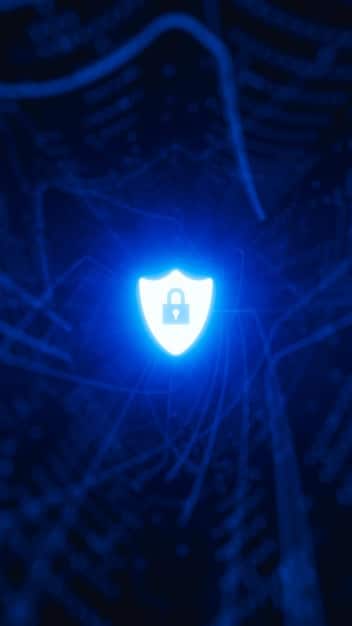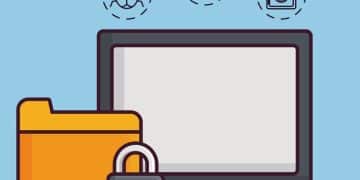Master Strong Passwords: 3 Proven Methods to Create & Remember Them

Crafting strong, memorable passwords is essential for digital security, and this guide explores three proven methods—passphrases, password managers, and pattern-based recall—to enhance your online protection effectively and conveniently.
In our increasingly digital world, a robust password isn’t merely a suggestion; it’s the first and most critical line of defense against cyber threats. While the concept of a “strong” password might seem abstract or complicated, the reality is that creating one is simpler than you might think, and remembering it doesn’t have to be a daily struggle. This article delves deeply into how to create a strong password and remember it: 3 proven methods that blend security with practicality, ensuring your online presence remains secure without sacrificing usability.
The Evolution of Password Security: From Simple to Sophisticated
The journey of password security has been a dynamic one, shifting dramatically as cyber threats evolved from nuisance to significant global concerns. Early passwords were often short, simple, and easily guessable, reflecting a time when the internet was a nascent frontier and hacking was less sophisticated. Users frequently relied on personal information, common words, or sequential numbers, assuming that obscurity alone offered sufficient protection. This period saw the rise of dictionary attacks and brute-force attempts, highlighting the inherent vulnerabilities of such basic authentication methods. The initial focus on easily rememberable patterns inadvertently created widespread security gaps, making many online accounts susceptible to compromise.
As technology advanced and the internet became integral to daily life, so too did the complexity of digital threats. Cybercriminals began leveraging faster processors and more sophisticated algorithms, transforming rudimentary guessing games into relentless, automated assaults. This forced a significant re-evaluation of password best practices, ushering in an era of stricter requirements: minimum length, inclusion of uppercase and lowercase letters, numbers, and special characters. While these requirements aimed to increase entropy and make passwords harder to crack, they inadvertently introduced a new challenge for users: memorability. The tension between security and convenience became a central theme, as users struggled to recall a multitude of complex, seemingly random strings of characters for their ever-growing list of online accounts.
The current landscape of password security recognizes the limitations of relying solely on complex, random character strings. While cryptographic strength remains paramount, there’s a growing emphasis on user experience and the adoption of more intuitive, yet equally secure, methods. The focus has broadened to include multi-factor authentication (MFA), biometric logins, and the intelligent use of password management tools, which collectively aim to build layered defenses. This evolution reflects a crucial understanding: security is not just about complexity, but also about sustainability and user adoption. The goal now is to empower users with strategies that are both highly secure and practically manageable, moving beyond the era of “random letters and numbers” to more sophisticated and user-friendly paradigms.
Method 1: Embrace the Passphrase for Ultimate Memorability
Passphrases represent a fundamental shift in how we approach password creation, moving away from short, complex character strings to longer, more memorable sequences of words. This method leverages the natural human ability to recall sentences or phrases, while simultaneously boosting the complexity and unguessability of your login credentials. By combining multiple, unrelated words, you create a password with significantly higher entropy, making it exponentially harder for automated attacks like brute-force or dictionary assaults to crack. The power of a passphrase lies in its length and the unlikelihood of its component words appearing together in common databases or dictionaries. It’s akin to stretching a rubber band: the longer it is, the harder it is to break.
Crafting Effective Passphrases
The key to a strong passphrase lies in choosing words that are both unique and easy for you to remember, but difficult for others to guess. Avoid using phrases from common songs, movie quotes, or famous sayings that could be easily found. Instead, opt for a sequence of 3-5 (or more) completely unrelated words. The more eclectic and random the combination, the better. Consider adding numbers, symbols, or capitalization within the phrase for an extra layer of security, making it even more robust without sacrificing memorability.
- Combine 3-5 random, unrelated words.
- Use a mix of uppercase and lowercase letters.
- Integrate numbers or symbols randomly within the words.
- Avoid easily guessable personal information or common phrases.
For instance, “PurpleElephantBananaCloudTable” is far stronger than “MyDogSparky123!”, despite the latter containing numbers and symbols. The humor or absurdity of the phrase can sometimes make it even more memorable. Think of a short story or a visual image that connects the words. The human brain is excellent at recalling narratives, however nonsensical they may be.
Pros and Cons of Passphrases
The primary advantage of passphrases is their enhanced memorability coupled with superior security. Unlike complex random strings, a well-constructed passphrase can be recalled with relative ease, reducing the likelihood of users writing them down or resorting to insecure methods of storage. This method also encourages users to be more creative with their security, fostering a sense of ownership over their digital defenses. However, the effectiveness of passphrases can be undermined if the chosen sequence is too short, uses overly common words, or is re-used across multiple accounts. The temptation to shorten or simplify a passphrase for convenience must be resisted to maintain its integrity. While passphrases are excellent for primary accounts, managing many unique passphrases can still be challenging.
Method 2: Leverage Password Managers for Unmatched Security and Convenience
Password managers represent the gold standard in modern digital security, offering a comprehensive solution for generating, storing, and managing a multitude of complex, unique passwords. These applications act as encrypted digital vaults, securing all your login credentials under a single, strong master password. They eliminate the burden of memorizing dozens or even hundreds of distinct, highly secure passwords, allowing you to use a truly unique and robust password for every online account without fear of forgetting them. The convenience factor is immense, as most password managers offer autofill capabilities, securely entering your credentials with a single click or tap, thereby streamlining your login experience while maintaining peak security.

How Password Managers Work
At their core, password managers generate highly complex, random passwords that are virtually impossible for humans to memorize. These passwords typically exceed minimum length requirements, incorporating a mix of uppercase and lowercase letters, numbers, and special characters. Once generated, they are encrypted and stored within the manager’s secure database. When you need to log in to a website or application, the password manager can automatically retrieve and input the correct credentials. This process ensures that your passwords are never exposed in plain text and reduces the risk of phishing attacks, as the manager will only interact with legitimate websites you’ve previously saved. Many password managers also offer features like secure notes, file attachments, and identity protection, providing even greater utility for managing sensitive information.
Choosing the Right Password Manager
Selecting a password manager requires careful consideration of security features, platform compatibility, and ease of use. Reputable services prioritize robust encryption protocols (such as AES-256), multi-factor authentication (MFA) options for accessing the vault, and regular security audits. Look for solutions that offer cross-device synchronization, allowing you to access your passwords seamlessly across desktops, laptops, tablets, and smartphones. Popular choices like LastPass, 1Password, Bitwarden, and Dashlane offer varying feature sets and pricing models, but all provide significant improvements in security over manual password management. Customer support and a clear privacy policy are also important factors to consider, as you are entrusting these services with your most sensitive digital keys.
Mitigating Risks and Best Practices
While password managers offer unparalleled security, it’s crucial to understand that their strength hinges entirely on the security of your master password. If your master password is weak or compromised, the entire vault becomes vulnerable. Therefore, your master password must be exceptionally strong—ideally, a long, unique passphrase that you commit to memory and never write down. Enable multi-factor authentication (MFA) on your password manager for an additional layer of defense. Regularly update your password manager application to ensure you benefit from the latest security patches and features. Additionally, be cautious of phishing attempts that try to trick you into revealing your master password or downloading malicious software. Treat your password manager like the digital fort it is, and its integrity will protect your entire online life.
Method 3: Pattern-Based Recall and Memory Aids for Strategic Remembering
Even with the advantages of passphrases and password managers, some individuals may prefer or need supplementary memory techniques for specific, high-priority accounts, or as a transitional strategy. Pattern-based recall and memory aids tap into the brain’s natural capabilities for association, visualization, and sequential memory, transforming cryptic character strings into more digestible and retrievable mental constructs. This method acknowledges that the human mind isn’t designed to memorize random data, but excels at recalling information that is structured, meaningful, or linked to vivid mental imagery. It’s about creating internal narratives or visual cues that guide you to the correct password, rather than brute-force memorization.
The Cognitive Walkthrough Method
One effective pattern-based strategy involves creating a “cognitive walkthrough” for your password. This means associating each character or segment of your password with a specific physical action, a step in a routine, or an object in a familiar room. For example, if part of your password is “3a!Q”, you might associate ‘3’ with three steps to your left, ‘a’ with picking up an apple, ‘!’ with a startling sound, and ‘Q’ with the shape of a question mark on a whiteboard. When you need to recall the password, you mentally walk through this sequence of actions or observations. This method leverages spatial and kinesthetic memory, which are often stronger than rote memorization for abstract data. The more unique and vivid your associations, the more robust your recall will be.
Visual Mnemonics and Acronyms
Visual mnemonics involve creating an exaggerated, memorable image or story that incorporates elements of your password. Imagine a fantastical scenario where components of your password interact. For instance, for “P@$$w0rd”, you might visualize a giant purple ‘@’ sign made of dollar bills sitting on a green field ‘0’ with a tiny ‘rd’ road leading off. The more absurd and multi-sensory the image, the better it sticks. Acronyms are another powerful aid, where each letter of a memorable phrase or sentence corresponds to a character in your password. For example, “My Dog Eats Fresh Bones Daily” could become “MD.EFBD!”. This works particularly well for initial characters, which can then be combined with numbers or symbols at specific, meaningful points within the password. Combining both visual mnemonics and acronyms often yields the strongest results.

Balancing Memorability and Security
The challenge with pattern-based recall is striking the right balance between ease of memorability and cryptographic strength. While these techniques boost personal recall, they should not compromise the inherent randomness and complexity of the password itself. The underlying password should still adhere to best practices: sufficient length, a mix of character types, and uniqueness for each account. The memory aid simply acts as a secure “key” to unlock that complex character string in your mind. Avoid creating patterns or mnemonics that are too obvious, common, or easily reverse-engineered. The mental pattern you create should be as personal and obscure to others as possible. This method is best used as a supplement to stronger strategies or for individuals who prefer not to rely solely on password managers for every single login.
Beyond the Password: Multi-Factor Authentication and Other Defenses
While creating and remembering strong passwords is foundational, modern digital security extends far beyond a single string of characters. Multi-Factor Authentication (MFA) stands out as the most crucial additional layer of defense you can implement. MFA requires users to provide two or more verification factors to gain access to an account, rendering a compromised password largely useless to an attacker. This typically involves something you know (your password), something you have (a phone, security key), and/or something you are (a fingerprint, facial scan). Enabling MFA on all supported accounts significantly elevates your security posture, making your accounts resilient even if your primary password is breached, turning a potential vulnerability into a minor inconvenience.
Moreover, integrating awareness of common cyber threats into your daily digital habits is critical. Phishing attacks, which attempt to trick you into revealing your credentials, remain a prevalent and dangerous threat. Always scrutinize emails, messages, and calls asking for personal information or credentials. Verify the sender’s identity and the legitimacy of links before clicking. Similarly, practicing good digital hygiene, such as regularly updating software and operating systems, using reputable antivirus software, and being mindful of public Wi-Fi networks, contributes significantly to your overall security. These practices collectively form a robust defense, transforming your online presence from a potential target into a well-fortified digital fortress, where the strength of your password is just one component of a comprehensive security strategy.
The Role of Secure Browser Habits
Your web browser is often the primary interface through which you interact with online services, making its security and your browsing habits profoundly influential on your overall digital safety. Utilizing a secure, up-to-date web browser that offers built-in security features, such as phishing protection, pop-up blockers, and tracking prevention, is a non-negotiable best practice. Regularly clearing browser cache and cookies can prevent session hijacking and protect your privacy from unwanted tracking. Furthermore, be wary of browser extensions, especially those that request broad permissions; while many are benign, malicious extensions can capture sensitive data, including your passwords. Prioritize extensions from reputable developers and only install those absolutely necessary, reviewing their permissions carefully during installation to ensure they do not pose an undue risk to your security.
The adoption of HTTPS (Hypertext Transfer Protocol Secure) is another critical aspect of secure browsing. Always confirm that websites you visit, particularly those where you log in or share sensitive information, display “https://” in the URL and a padlock icon. This indicates that your connection to the site is encrypted, protecting your data in transit from eavesdropping. Unencrypted HTTP connections, conversely, leave your data vulnerable as it travels across the internet. Making secure browser habits a consistent part of your routine complements your strong passwords and MFA, establishing a holistic approach to digital security where every layer works in concert to safeguard your personal and financial information from an ever-evolving landscape of cyber threats.
Regular Password Audits and Why They Matter
Beyond creating strong passwords and implementing additional security measures, the ongoing practice of conducting regular password audits is an indispensable element of a robust cybersecurity strategy. A password audit involves systematically reviewing your existing passwords, identifying any weaknesses, and updating them as necessary. This process is crucial because the threat landscape is constantly changing, and what might have been considered a strong password a few years ago might now be vulnerable due to advances in computing power or new cracking techniques. Furthermore, data breaches are unfortunately common, and even if your password is strong, if it has been exposed in a breach on one service, it could be used by attackers to gain unauthorized access to other accounts where you might have re-used it, underscoring the critical importance of regular evaluation.
How to Conduct an Effective Password Audit
An effective password audit begins with a comprehensive inventory of all your online accounts and their associated passwords. Many password managers offer built-in auditing features that scan for weak, re-used, or compromised passwords, making this process significantly easier and more efficient. Without a password manager, this task can be more manual, requiring you to visit each service individually. During the audit, pay particular attention to accounts that:
- Use short or simple passwords.
- Have passwords that are re-used across multiple services.
- Were established a long time ago and haven’t been updated.
- Are for critical services (e.g., banking, email, social media, government services).
For any account that falls into these categories, immediately update the password to a new, unique, and strong one, ideally generated by a password manager or crafted using a robust passphrase methodology. Think of this as a regular check-up for your digital health, ensuring that no vulnerabilities are silently festering.
The Benefits of Proactive Password Management
The benefits of conducting regular password audits extend beyond merely reacting to potential threats; they foster a proactive security mindset. By routinely reviewing and updating your passwords, you significantly reduce your attack surface and minimize the potential damage from a data breach on a third-party service. This ongoing vigilance ensures that your digital identity remains protected against an evolving array of cyber threats. Moreover, it reinforces the habit of good password hygiene and keeps you informed about best practices in cybersecurity. A proactive approach to password management, characterized by periodic audits, is not just about preventing current attacks, but also about building resilience against future, unforeseen threats in the ever-shifting digital landscape, making it an essential component of comprehensive personal cybersecurity.
| Key Point | Brief Description |
|---|---|
| 📝 Passphrases | Combine random words for high security and memorability, enhancing entropy through length. |
| 🔐 Password Managers | Generate, store, and autofill complex passwords securely, reducing memorization burden. |
| 🧠 Pattern-Based Recall | Use mental associations, visuals, or acronyms to recall complex passwords effectively. |
| 🛡️ Multi-Factor Authentication | Add extra layers of security beyond passwords (e.g., biometrics, codes) for robust protection. |
Frequently Asked Questions About Password Security
While traditional advice recommended frequent changes (every 90 days), current security guidelines suggest changing passwords only when there is a suspected breach or compromise. For unique, strong passwords, constant changes can be counterproductive, leading to weaker, more guessable patterns. Focus on using unique, complex passwords for each account and enabling multi-factor authentication (MFA) to build robust security layers.
Generally, writing down passwords is discouraged as it creates a physical vulnerability. However, if absolutely necessary, ensure they are stored securely in a location inaccessible to others, such as a locked safe or a secure, non-digital encryption method. A far better and safer alternative is using a reputable password manager, which encrypts and stores your credentials digitally, accessible only with a strong master password and often multi-factor authentication.
Common mistakes include using personal information (birthdates, names), common words or phrases, sequential numbers, or easily guessable patterns like “password123.” Reusing passwords across multiple accounts is also a critical error, as it allows a single breach to compromise numerous services. Avoid these pitfalls by opting for long, unique combinations of random words (passphrases) or letting a password manager generate them for you.
MFA adds an essential layer of security by requiring a second verification method beyond just your password. Even if a cybercriminal obtains your password, they cannot access your account without this second factor—something you possess (like your phone or a hardware key) or something you are (like a fingerprint). This significantly reduces the risk of unauthorized access, making your accounts much more resilient against phishing and credential stuffing attacks.
While strong passwords are a vital first line of defense, they are not a silver bullet against all cyber threats. Sophisticated attacks like malware, ransomware, or zero-day exploits can bypass password protection. A comprehensive security strategy includes strong, unique passwords, multi-factor authentication, regular software updates, reputable antivirus software, and cautious online behavior. Together, these layers provide a robust defense against a wide array of digital dangers.
Conclusion
Navigating the complexities of digital security may seem daunting, but mastering the art of creating and remembering strong passwords is a fundamental and empowering step. By embracing the strategic use of passphrases, leveraging the unparalleled convenience and security of password managers, and occasionally employing pattern-based recall methods, you can build a robust defense against common cyber threats. Remember, the true strength of your digital perimeter lies not just in the complexity of your passwords, but in the intelligent combination of these proven techniques, complemented by multi-factor authentication and vigilant online habits. Taking proactive steps today ensures a more secure and resilient future in our interconnected world, transforming what once seemed like an arduous task into a seamless aspect of your daily digital life.





